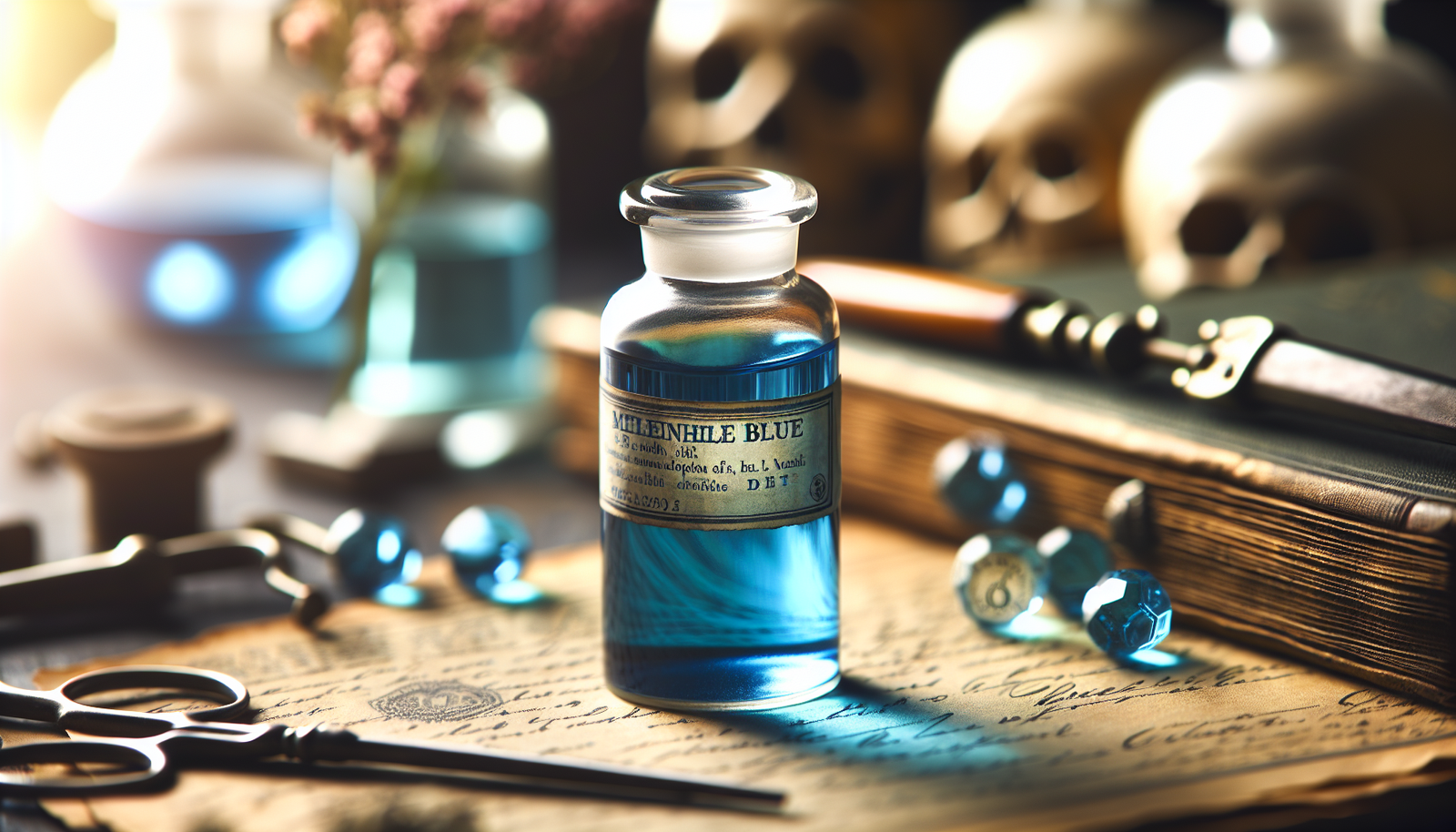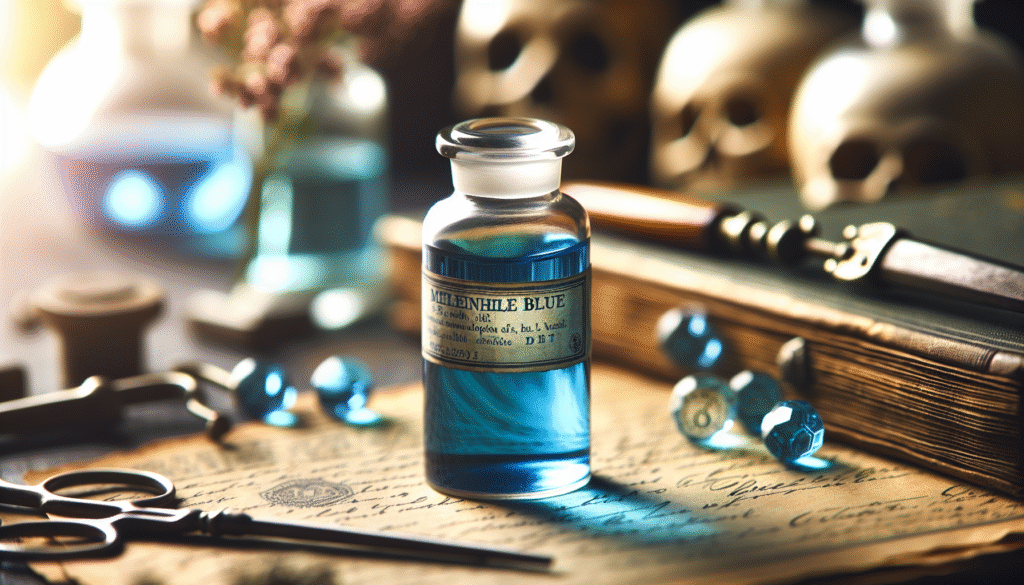
What do you know about the applications of methylene blue in medicine? The journey of this remarkable compound is not just a story of scientific discovery, but a reflection of how medical understanding evolves through time, addressing a multitude of health challenges.

Origins of Methylene Blue
Methylene blue was first synthesized in the late 19th century by Heinrich Caro, a German chemist. Initially, it was created as a dye, an innovation that marked the beginning of its varied applications beyond mere coloration. But what led to its journey into the medical realm?
The Journey from Dye to Medicine
In 1876, the potential of methylene blue was recognized when it was used to stain cells in biological and medical research. Scientists soon discovered that this compound possessed fascinating properties, such as its ability to alter cellular behavior and interact with biological systems.
Understanding Its Chemical Structure
To appreciate its significance in medicine, one must consider the chemical structure of methylene blue. It is categorized as a phenothiazine compound. The presence of a dimethylamino group allows it to engage in redox (reduction-oxidation) reactions, which play a pivotal role in various biological processes.
Early Medical Applications
As researchers learned more about methylene blue, its potential medicinal benefits became apparent, especially in various diseases and conditions.
Methylene Blue and Methemoglobinemia
One of the earliest medical applications of methylene blue arose from its effectiveness in treating methemoglobinemia, a condition characterized by an abnormal amount of methemoglobin in the blood.
Mechanism of Action
Methemoglobin cannot carry oxygen as effectively as normal hemoglobin, leading to symptoms like cyanosis and fatigue. Methylene blue serves as a reducing agent, converting methemoglobin back to its functional form. The dosage and administration route are critical for its efficacy.
Role in Antisepsis
Methylene blue’s introduction into medicine also coincided with a growing interest in antiseptic practices. Its antimicrobial properties caught the attention of medical professionals.
Historical Context
By the early 20th century, methylene blue was frequently used to treat infections and was incorporated into surgical protocols, primarily due to its ability to inhibit bacterial growth. This was especially significant before the advent of modern antibiotics.
The 20th Century: A Transition in Research
As medical research evolved, significant shifts occurred in the understanding and application of methylene blue.
Methylene Blue in Psychiatry
The mid-20th century saw methylene blue being experimented with in psychiatric settings. Its role as a potential treatment for depression began to gain traction.
Mechanisms and Hypotheses
Researchers hypothesized that methylene blue could influence monoamine oxidase (MAO) activity, an enzyme linked to mood regulation. This concept introduced it as a candidate in pharmacological antidepressant studies, although the results remained mixed.
Challenges and Setbacks
As psychedelic research expanded in the latter part of the century, smaller studies on methylene blue got overshadowed. Despite the promise it showed, clinical acceptance was hindered by a lack of definitive evidence and the emergence of newer antidepressants.
Resurgence of Interest in Methylene Blue
As scientific inquiry persisted into the 21st century, researchers revisited this compound with renewed focus.
Recent Studies and Findings
Ongoing studies have revealed additional properties of methylene blue. Recognized for its neuroprotective effects, it began to be explored in the context of neurodegenerative diseases like Alzheimer’s and Parkinson’s.
Antioxidant Properties
methylene blue acts as an antioxidant, providing a protective effect against oxidative stress. This characteristic has implications for neurological health, as oxidative damage is a known contributing factor in neurodegeneration.
Current and Future Applications
Emerging evidence suggests that methylene blue could be beneficial in critical scenarios, from enhancing cognitive function to serving in advanced medical therapies, including photodynamic therapy in cancer treatment.

Clinical Considerations and Pharmacology
With any compound used in clinical settings, understanding its pharmacology is crucial.
Administration and Dosage
Methylene blue can be administered through various routes, including intravenous and oral formulations. The choice of administration typically depends on the indication and severity of the condition being treated.
| Administration Route | Common Dosage | Indications |
|---|---|---|
| Intravenous | 1-2 mg/kg | Methemoglobinemia |
| Oral | 100-300 mg | Antidepressant studies |
| Topical | Varies | Antimicrobial usage |
Safety and Side Effects
While the therapeutic use of methylene blue is prevalent, it is essential to be informed about safety and potential side effects.
Adverse Reactions
Common adverse reactions can range from mild (nausea, headache) to severe (serotonin syndrome, anaphylaxis). It is pivotal to screen patients for contraindications, particularly those on serotonergic medications.
Ethical and Legal Considerations
As with any medical treatment, ethical considerations must guide the use of methylene blue in healthcare environments.
Informed Consent
Patients must receive comprehensive information regarding the benefits and risks associated with methylene blue treatment. Transparency promotes informed consent and enhances trust in the physician-patient relationship.
Current Regulatory Status
While methylene blue is approved for specific uses, it is not without controversy. Awareness of its legal standing across jurisdictions is necessary, especially in cases involving off-label usage.
Conclusion
The history of methylene blue in medicine illustrates the complex narrative of scientific discovery and application. From its pharmaceutical beginnings to contemporary uses, this compound embodies the ongoing dialogue in medical research. Its prospects and possibilities continue to inspire, reminding us of the ever-evolving nature of healthcare.
As new studies emerge, the potential roles for methylene blue seem limitless. Continued research will not only enhance its application but stimulate conversation about how we unlock the depths of existing compounds in our pursuit of better health outcomes. With a mindful approach to those seeking treatment with methylene blue, the future holds promise.